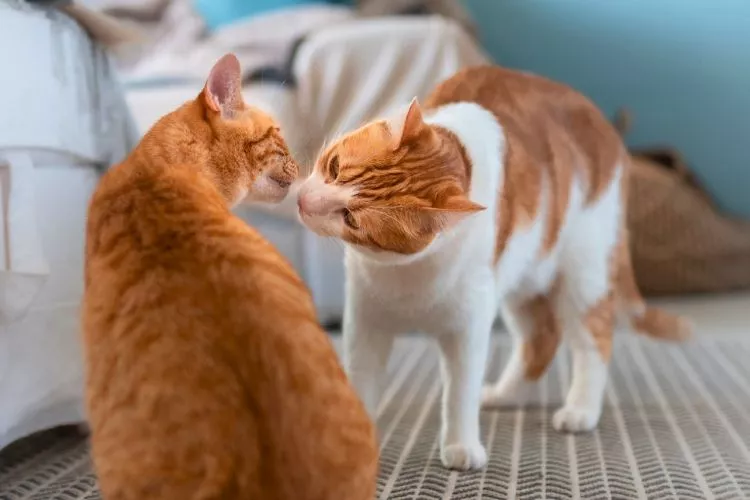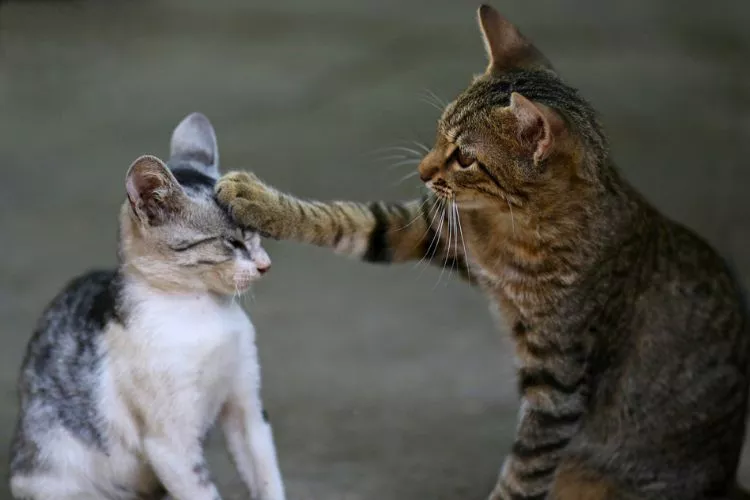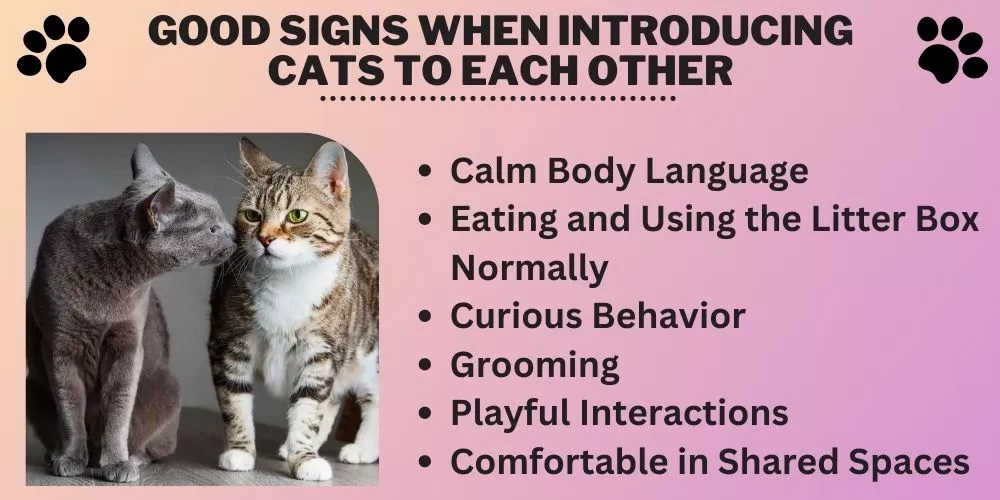Get ready for some feline diplomacy as we guide you through the process of introducing two cats to each other. Whether you’re adding a new cat to your household or introducing your furry friend to a companion, this article provides practical tips and strategies for a smooth transition.
From understanding cat behavior and body language to mastering the art of gradual introductions, we’ll cover everything you need to know to make this meeting a success. Learn how to reduce territorial disputes, prevent aggression, and create a peaceful, friendly environment for your curious four-legged companions.
Stay with us as we decode the mysteries of cat communication and help you foster harmony between your cats, turning potential tension into a lasting bond.
Get ready for some feline diplomacy as this article takes you on a unique journey to help you learn how to introduce two cats to each other.
From understanding cat behavior to practical tips, we discuss smart, efficient techniques to make this meeting a success.
Unpack the mystery of cat-communication and mark an end to territorial disputes. Discover how to foster a peaceful, friendly environment for your curious four-pawed companions.

Stay with us as we decode the feline language of love and tug-of-war.
🐾 Steps to Introduce two cats to each other
Introducing cats to each other requires time, patience, and a little extra love. Yet, the result is worth it, fostering new friendships between your feline friends!
This guide on how to introduce two cats to each other provides all the information you’ll need to navigate this important procedure.
Step 1: Preparation
Before your cats meet, prepare your home.
- Dedicate separate spaces: Each cat should have a separate “safe” room with food, water, a litter box, and a comfortable resting place.
- Maintain scent neutrality: Clean your home to minimize any prevailing pet scent. Use an enzyme-based cleaner and pay particular attention to the cat’s bedding and toys.
Step 2: Initial Introduction
Allow both cats to adjust to their new environments independently before they interact:
- Exchange scents: Swap bedding between the two rooms so they can grow accustomed to the other’s scent.
- Feed them near the door: Feed the cats near the door that separates them. They will start associating the other’s scent with positive experiences.
Step 3: Controlled Interactions
The visual introduction of both cats is a vital step in the process.
- Barrier Interactions: Begin by slightly opening the door when both cats are calm, typically during meals. This allows them to glimpse each other without direct contact. A crack wide enough for them to see each other but not wide enough to physically interact is perfect.
- Controlled Meetings: After several days of barrier interactions, increase their visual interaction with the help of baby gates or a screen door. This method offers both cats more visual access but still maintains physical separation. Monitor their reactions closely during these controlled meetings.
Step 4: Positive Reinforcement
Building positive associations with each other’s presence can ease tension, with treats and play:
- Use Treats and Praise: Cats respond well to rewards. Giving both cats kibbles, wet food, or their favorite treats during visual interactions encourages positive associations with each other’s presence. While they’re being calm and observing each other, give them verbal praise in a soothing voice.
- Play Sessions: Use interactive toys such as laser pointers or feather wands to engage with both cats simultaneously. Besides distraction, this co-play fosters bonding. However, watch for any signs of aggression or discomfort during these sessions.
Step 5: Supervised Co-habitation
Permitting shared space under supervision is the next step once they show signs of comfort during controlled meetings:
- Shorter Shared Sessions: Initially, these shared sessions should be limited to 10-15 minutes, increasing over time. Keep these sessions peaceful — if tensions rise, separate them gently using a blanket or a large piece of cardboard to block their vision.
Step 6: Gradual Independence
- Increase Unsupervised Time: Start leaving them unsupervised for short time frames. Gradually increase this duration over several days or weeks, depending on their comfort level.
- Assess Progress: Monitor their interactions. If signs of aggression or stress — like excessive hissing, growling, or physical fights — it might be necessary to revisit one of the previous steps. Remember, each pair of cats will adjust at their own pace. Patience is paramount.
While this process takes patient execution, the result can be a harmonious home for your feline friends. Remember to spend quality time with your cats individually and ensure they feel loved and safe.
🐾 How to introduce two cats when one is aggressive?
Introducing two cats, especially when one is aggressive, can be challenging, but several steps may help you transition the process smoothly.

- The first action should be confinement, you can confine the aggressive cat to a medium-sized space – not too small like a closet where they might feel too confined, and not too large they can take over the space.
- Let the cats interact positively through a gate or door. Positive interactions may include touching noses, rubbing their bodies against the barrier, or ignoring each other. Once they exhibit these signs, you can permit them to face each other. Be ready to supervise and make a noise like clapping to deter them if any signs of aggression appear.
- Scent Merger: Wipe a towel over the areas where the scent glands are most prominent like the face, back and tail, first on the resident cat, then using the same towel, rub the new cat and leave the towel there. Repeat the process but in reverse.
- Don’t let them resolve it by themselves. Some owners might think that letting aggressive cats sort it out will resolve the situation. However, this is likely to cause more anxiety and worsen the situation.
- Gradually introduce the space of the house to the aggressive cat. Start from its confinement room, then slowly expand its territory.
Remember that every cat is different; what works for one might not necessarily work for the other.
🐾 Good signs when introducing cats to each other
Observing your cats’ behavior during the introduction process can provide valuable insight into their comfort level and acceptance of each other.
Some promising signs that suggest the introduction is going well include:

Calm Body Language
Cats that feel comfortable and relaxed in each other’s presence will exhibit calm body language:
- Ears: Positioned in a natural, upright position, not flattened or turned sideways or backward.
- Tail: Held high with a relaxed flick at the end, not puffed or tucked under their body.
- Eyes: Blinks or half-closed eyes signify contentment and trust, not dilated or focused intensely on the other cat.
Eating and Using the Litter Box Normally
Cats under stress may refuse to eat or have issues using their litter box. If both cats continue to eat normally and maintain regular litterbox habits during the introduction, it indicates they’re comfortable with the changes.
Curious Behavior
If both cats display interest in the other without signs of anxiety or aggression, it’s a great sign. They may sniff each other, the door separating them, or any items carrying the other cat’s scent.
Grooming
Grooming near or in the other cat’s presence indicates that they are comfortable enough to let their guard down. Mutual grooming, or allogrooming, is a strong sign of social bonding in cats.
Playful Interactions
Playing can be an indicator that the cats are comfortable with each other. Watch for coordinated play efforts, such as chasing, fighting, or pouncing on one another.
Comfortable in Shared Spaces
If both cats can peacefully share a room without growling, hissing, or showing signs of stress, they are likely becoming comfortable with each other.
It’s important to remember that the process can take time, and there may be occasional setbacks.
However, these positive signs indicate that the cats are getting used to each other and are on their way to forging a peaceful coexistence.
🐾 Warning signs when introducing cats
While it’s normal for there to be some tension during the introduction process, there are certain warning signs that your cats are not adjusting well. Immediate intervention may be required in these cases to avoid escalation:

Aggressive Behaviors
Look out for overt aggression such as:
- Growling, or Yowling: While a little hissing or growling can be normal, continued or escalated instances could be part of more serious aggression.
- Swatting and Biting: If either cat engages in swatting, biting, or any physical confrontations, this is a clear signal that the situation is not improving.
Fearful Body Language
Fearful body language can signal that a cat feels threatened or uncomfortable:
- Tail Tucked: A tail tucked under the body can signify fear or submission.
- Ears Flattened: Ears flattened against the head can indicate fear, irritation or anxiety.
Excessive Hiding
If either cat persistently hides or refuses to leave its ‘safe’ area, it may denote extreme stress or fear of the other cat.
Changes in Eating or Litter Box Habits
Lack of appetite or changes in litter box usage can signal a stressed cat. If a cat stops eating or has frequent accidents outside the litter box, they may not be comfortable with the current situation.
Over-grooming
Over-grooming or increased self-grooming, particularly in one specific area, can be a hampered response to stress.
If you notice any warning signs, it’s best to revert to a previous introduction stage or separate the cats for a period. In extreme cases where aggression or fear is intense, consider seeking advice from a veterinarian or a professional cat behaviorist.
🐾 How long does it take for 2 cats to get used to each other?
The time it takes for two cats to get used to each other can vary widely, depending on their personalities, age, and past experiences with other cats.
Some cats may take just a few days to become comfortable, while others may require weeks or months to fully adjust.

For most introductions, with proper planning and execution, expect to devote about 2-4 weeks to acclimate to each other.
However, it’s essential to pay attention to their behavior cues and adapt your approach accordingly. By observing their reactions and adjusting your approach, you can ensure the process moves smoothly.
🐾 Can you introduce two cats immediately?
Introducing two cats immediately is generally not recommended, as it can lead to territorial disputes or aggressive behavior. Instead, it’s crucial to follow a slow, gradual introduction process that lets each cat grow accustomed to the other’s presence, smell, and direct contact.
To achieve a successful, lasting introduction, it’s essential to:
- Form separate safe spaces for both cats.
- Introduce scents through bedding exchange.
- Start with controlled visual interactions.
- Encourage positive associations with treats and play.
- Supervise initial shared interactions.
- Gradually extend the length of unsupervised interactions.
Following these steps can minimize stress and conflict between the cats while promoting a harmonious household over time. Remember, patience and consistency are key factors in implementing this process effectively.
🐾 Is hissing normal when introducing cats?
Yes, hissing is quite normal when introducing cats to each other. Cats use communication to express discontent, discomfort, or fear, especially in unfamiliar or potentially threatening situations.
When your cats first meet, hissing or growling may occur as they establish their boundaries.

Keep an eye on these interactions, and if hissing is paired with aggressive behaviors like swatting or growling, it may require additional intervention, such as separating the cats and slowing down the introduction process.
However, if the hissing isn’t accompanied by further aggression and subsides over time, it’s likely a normal part of the introduction process.
🐾 How do I know if my cat will accept another cat?
Cats have individual personalities and environmental preferences, making it hard to predict how any cat will react to a new feline companion. Some signs may indicate your cat is more likely to accept another cat, such as:
- Past Experience: If your cat has lived with other cats before and had positive experiences, they’ll likely accept a new cat in the home.
- Sociability: Cats generally friendly with people or other animals may be more open to a new cat.
- Time and Patience: Cats are more likely to accept each other when given enough time and a gradual, patient introduction process.
Getting your cat used to the new cat’s scent before they meet face-to-face can be a useful strategy.
Similarly, positive reinforcement during initial interactions may help a cat associate the other cat with good experiences, increasing the likelihood of acceptance. Remember, every cat is unique and may react differently!
Conclusion:
Introducing two cats may be meticulous, marked by careful observation and patience.
Recognizing positive signs such as calm body language or playful interactions, and understanding warning signals that include aggressive behaviors or changes in eating or litter habits, are critical.
Even in challenging situations where one cat is aggressive, understanding their territory and employing scent strategies may ease the process.
Every cat is unique, so the key is tailoring this introduction suitably, ever mindful of their comfort and well-being.
Ultimately, the goal is to create a harmonious environment for both felines to coexist peacefully.
